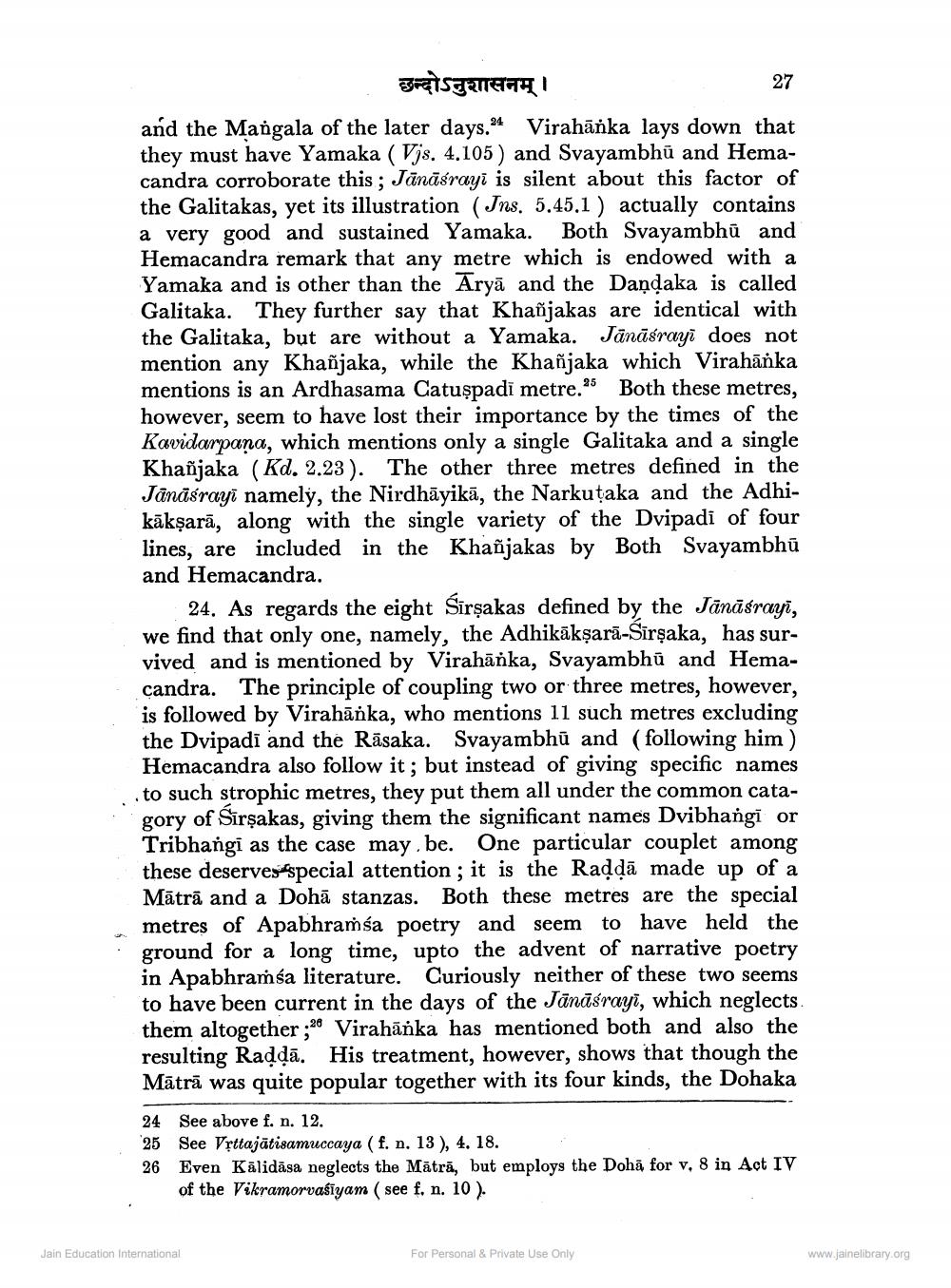________________
छन्दोऽनुशासनम् ।
27 and the Mangala of the later days.24 Virahāňka lays down that they must have Yamaka (Vjs. 4.105) and Svayambhū and Hemacandra corroborate this, Jānāsrayi is silent about this factor of the Galitakas, yet its illustration (Jns. 5.45,1 ) actually contains a very good and sustained Yamaka. Both Svayambhu and Hemacandra remark that any metre which is endowed with a Yamaka and is other than the Aryā and the Daņdaka is called Galitaka. They further say that Khañjakas are identical with the Galitaka, but are without a Yamaka. Jānāsrayi does not mention any Khañjaka, while the Khañjaka which Virahāňka mentions is an Ardhasama Catuşpadī metre. Both these metres, however, seem to have lost their importance by the times of the Kavidarpana, which mentions only a single Galitaka and a single Khañjaka (Kd. 2.23). The other three metres defined in the Jānāsrayi namely, the Nirdhāyikā, the Narkutaka and the Adhikākşarā, along with the single variety of the Dvipadi of four lines, are included in the Khañjakas by Both Svayambhū and Hemacandra.
24. As regards the eight Sirsakas defined by the Jānāsrayi, we find that only one, namely, the Adhikākşarā-Sirsaka, has survived and is mentioned by Virahāňka, Svayambhū and Hemacandra. The principle of coupling two or three metres, however, is followed by Virahāńka, who mentions 11 such metres excluding the Dvipadi and the Rāsaka. Svayambhū and ( following him) Hemacandra also follow it; but instead of giving specific names to such strophic metres, they put them all under the common catagory of Sirsakas, giving them the significant names Dvibhangi or Tribhangi as the case may be. One particular couplet among these deserves special attention; it is the Raddā made up of a Mātrā and a Dohā stanzas. Both these metres are the special metres of Apabhraṁsa poetry and seem to have held the ground for a long time, upto the advent of narrative poetry in Apabhraṁsa literature. Curiously neither of these two seems to have been current in the days of the Jānāśrayi, which neglects. them altogether ;28 Virahānka has mentioned both and also the resulting Raddā. His treatment, however, shows that though the Māträ was quite popular together with its four kinds, the Dohaka
S
.
24 See above f. n. 12. 25 See Vșttajātisamuccaya (f. n. 13 ), 4. 18. 26 Even Kälidāsa neglects the Mātrā, but employs the Dohå for v. 8 in Act IV
of the Vikramorvasiyam (see f. n. 10).
Jain Education International
For Personal & Private Use Only
www.jainelibrary.org




